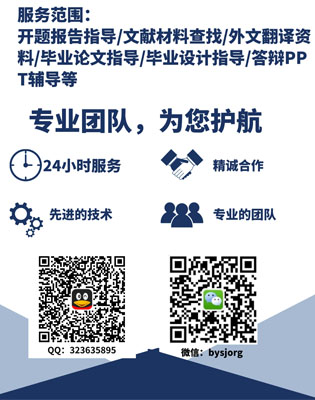基于单片机的高精度位移测量的设计研究毕业论文
2021-04-05 13:19:15
摘 要
在现代工业设计以及生产过程中,经常需要测量许多不同的位移量。与此同时对这些位移量进行较为精确地检测,是提高控制精度的基础。因此之前所普遍采用的传统位移测量装置的精度已经不能适应时代发展的潮流。在此背景下通过科研人员的不断努力终于研制出了数字式光电编码器,它的输入量是角位移量,输出量是相应的电脉冲,并且它具有体积小,精度高的优点。故而,这次毕业设计选用的是光电编码器作为测量位移的传感器。
本次毕业设计是以stc89C51单片机为基础,用光电编码器来实现对位移量的精确测量,再将测量结果显示在液晶显示器上。其中设计中所选用的是输出脉冲高电平为5V的光电编码器。
论文主要研究了光电编码器测位移时,如何将需要测量的直线位移转化为角位移输入到编码器中。以及单片机对编码器输出脉冲的识别与处理。
关键词:位移测量;光电编码器;单片机
Abstract
In modern industrial design and production process, it is often necessary to measure many different displacements. At the same time, more accurate detection of these displacements is the basis of improving control accuracy. Therefore, the precision of the traditional displacement measuring device, which has been widely used before, can not adapt to the trend of the times. Under this background, the digital photoelectric encoder has been developed through the continuous efforts of scientific researchers. Its input is angular displacement, and its output is the corresponding electrical pulse. Moreover, it has the advantages of small size and high precision. Therefore, optoelectronic encoder is chosen as displacement sensor in this graduation project.
This graduation project is based on stc89C51 single-chip computer. The photoelectric encoder is used to measure the displacement accurately, and then the measurement results are displayed on the LCD. The optoelectronic encoder with high output pulse level of 5V is selected in the design.
This paper mainly studies how to convert linear displacement to angular displacement when photoelectric encoder is used to measure displacement. And the recognition and processing of the output pulse of the encoder by the single chip computer.
Key Words:Displacement measurement; Photoelectric Encoder; MCU
目 录
摘 要 1
Abstract 1
第1章 绪论 1
1.1 研究背景 1
1.2 研究现状 1
1.2.1 光栅光电轴角编码器 2
1.2.2 绝对式编码器 3
1.2.3 准绝对式光电轴角编码器 4
1.2.4 综合分析 5
第2章 原理与基本理论 8
2.1 位移测量及其传感器简介 8
2.2 光电编码器的基本原理 10
2.1.1 增量式光电编码器 10
2.1.2 绝对式光电编码器 10
2.2.3 混合式光电编码器 11
第3章 设计方案及技术 12
3.1 方案选择及原理 12
3.1.1 脉冲鉴相与计数的软件实现方法 12
3.1.2 脉冲鉴相和计数的硬件实现方法 13
3.2 51系列单片机的定时器/计数器简介 14
3.3 STC89C52单片机 15
3.4 光电编码器DEEGS编码器DG38H 17
3.4.1 产品描述 17
3.4.2 输出波形与信号位置精度 17
3.4.3 技术参数 18
第4章 设计的过程 20
4.1 编码器的改装 20
4.2 单片机的计数功能实现 21
4.2.1 计数方式的选择 21
4.2.2 程序设计的流程图 24
4.2.3 keil软件的使用 25
4.3 设计系统总体结构图 31
第5章 总结与体会 33
参考文献 34
致 谢 35
第1章 绪论
1.1 研究背景
位移测量系统大部分都是通过各种各样的传感器来实现的,因此传感器本身的性能以及参数就从很大程度上决定了该测量系统的精度、实用性、通用性等要素。[1]
基于传统理论定义的位移传感器主要是有电容式位移传感器、电感式位移传感器以及电磁式位移传感器等几种。
电感式位移传感器与滑线电阻式传感器相比较,在工作频率范围、测量精度、使用寿命等各个方面都有显著的提升,电感式位移传感器的优点在于结构简单,加工、使用、维护以及保养都十分方便。
电容式位移传感器则具有以下优良的性能:稳定性好、分辨率高、响应时间断以及环境适应性好。然而电容式传感器由于其本身的特性电容量较小(通常在10-100PF之间),因此它的阻抗较高。[2]
在过去的几年中,特别是在光栅传感器的广泛应用和技术的不断进步的,完成了加工精度从 1μm提高到了 0.01μm,精度提升了 100倍。光栅可以用来作线位移量或角位移量的检测,且通过测量输出的信号为数字脉冲信号,能结合一些电子器件进行数据处理,比如单片机。光栅传感器通常把被测位移量转换为电信号,经前置放大和电路处理后,送入下位机进行综合运算处理后输出,并通过显示器显示,在精密加工方面应用的较多。[3]
光栅位移传感器同传统的位移传感器相比,具有抗电磁干扰、电绝缘机能良好、耐腐蚀、丈量规模广泛、体积小巧和传输容量大等长处,被广泛地应用在医疗范畴、交通范畴、电力范畴、机械范畴、航空航天范畴等。
1.2 研究现状
如今在科学技术的不断创新与发展中,各个高新技术领域都取得了长足的前进,光电编码器也趋于高精度、高分辨力、小型化的目的不断发展。与此同时,对编码器检测技术的精度也提出了更高标准的要求。[4]




